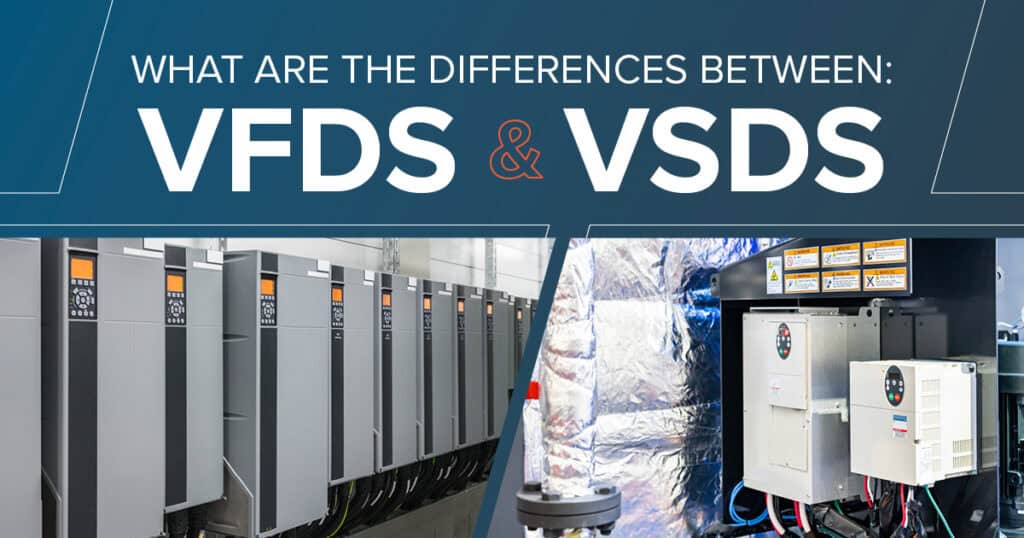When managing motor speed in industrial applications, the terms variable frequency drive (VFD) and variable speed drive (VSD) are important to understand. A VFD or another type of VSD may be the ideal solution for your motor management needs. Knowing the differences between VFDs and VSDs is crucial to optimize your system performance, energy efficiency, and equipment longevity.
What Is a VFD?
A variable frequency drive (VFD) is a specific type of drive that adjusts the frequency of the power supplied to it to control the speed of an alternating current (AC) motor. AC motors operate based on the frequency of the electrical current. By increasing or decreasing this frequency, VFDs control the motor’s speed and torque.
VFDs are common in applications requiring precise speed control, such as in pump systems, conveyors, and fans. They allow motors to operate at reduced speeds, rather than constantly running at full capacity, which makes them highly effective in cutting energy costs. This capability makes VFDs popular in HVAC systems, manufacturing processes, and water treatment facilities where fluctuating load demands are frequent.
What Is a VSD?
Variable speed drive (VSD) is a broader term encompassing any technology that adjusts the speed of machinery, whether AC or direct current (DC) motors power it. VSDs include VFDs but also apply to other drive types such as DC drives and servo drives. Unlike VFDs, VSDs can control both AC and DC motor speeds.
This flexibility allows VSDs to support various applications. Examples include industrial equipment and smaller machinery like elevators, where both AC and DC motors may be used. While VSDs adjust speed and torque similarly to VFDs, their versatility enables them to function with both frequency and voltage control.
Key Differences Between VFDs and VSDs
- Motor Compatibility:
- VFDs are specific to AC motors. They vary the frequency of the electrical current to control motor speed.
- VSDs can control both AC and DC motors. They adjust speed through different mechanisms depending on the motor type, such as changing voltage for DC motors.
- Application Scope:
- VFDs are ideal for industries heavily reliant on AC motors and precise speed control.
- VSDs are broader in scope, used in applications needing speed control for both AC and DC systems.
- Cost and Complexity:
- VFDs tend to be more affordable and simpler to implement in applications where AC motor control is needed. They’re also energy efficient, contributing to long-term savings.
- VSDs are more expensive but also more versatile. They are necessary for environments that require compatibility with both motor types. Their additional functionality often justifies the cost in complex operations where adaptability is crucial.
- Control Mechanisms:
- VFDs primarily manage speed through frequency adjustment.
- VSDs may control speed through frequency adjustments for AC motors or voltage control for DC motors.
Choosing Between VFDs and VSDs
Selecting the right drive depends on your equipment and process needs. If you’re dealing strictly with AC motors and aiming for energy efficiency, a VFD may be sufficient and cost-effective. However, if you need flexibility for both AC and DC systems, a VSD provides that compatibility at a potentially higher up-front investment.
To select and configure the best variable drive for your specific equipment and application, contact DXP Pacific today.

